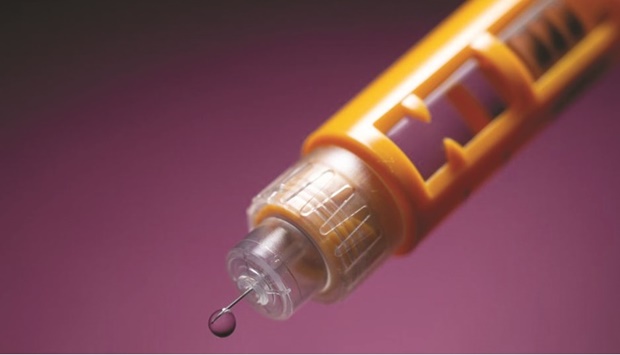After insulin was discovered in 1921, the Canadian scientists behind the breakthrough sold the patent for their formula for just C$1. As medical researcher Frederick Banting said at the time, they wanted to make it as widely available as possible because “it belongs to the world.”
In the century since then, a host of improved forms of insulin have been developed, offering greater efficiency and convenience to people with diabetes. Yet millions still struggle to access any version of this lifesaving drug.
More than a half-billion adults are estimated to be living with diabetes, and this number is expected to reach nearly 800 million by 2045. For people with Type 1 diabetes, insulin transforms a deadly disease into a manageable condition. For those with the more common Type 2 form, insulin prevents kidney failure, blindness, and the risk of gangrene.
Sadly, poor availability and unaffordable prices mean that one in two people globally who need insulin to treat Type 2 diabetes lack access to it. The shortfall is most severe in low- and middle-income countries, where diabetes cases are rising at an alarming rate.
The inability to ensure equitable access to insulin is a tragic failure of the world’s health system. It betrays the scientists’ original vision for their lifesaving therapy and causes patients unnecessary harm. And it has continued despite significant progress in product development and manufacture over the past two decades.
As insulin has evolved from a tool for managing Type 1 diabetes to an important treatment for Type 2, pharmaceutical companies have scaled up production and developed innovative new products like synthetic insulins. These analogs have expanded the possibilities for diabetes treatment by offering longer duration of action and improved control of blood-sugar levels between meals and overnight. They can make patients’ lives easier and cut the risk of dangerous hypoglycaemia. Increasingly, analogs are the preferred choice of both doctors and patients.
Analogs also have been a multi-billion-dollar windfall for the three largest manufacturers – Eli Lilly, Novo Nordisk, and Sanofi – which control over 90% of the insulin market globally and two-thirds of the market in low- and middle-income countries. But these products largely are inaccessible in poorer countries, so millions of patients cannot choose which treatment option is right for their medical needs. And while the expiration of patents on certain analogs should open the door for the production of cheaper biosimilar versions, few rival manufacturers have entered the market, despite some notable launches from India’s Biocon and US-domiciled Viatris.
Recently, the World Health Organisation decided to add long-acting insulin analogs and their generic equivalents to its Model Lists of Essential Medicines – an inventory of basic products every health system should have for its patients. This move could be a catalyst for improved access, but only if industry increases production and governments are ready to foot the bill.
Cost remains a primary factor in insulin accessibility. While the Big Three manufacturers have initiatives to address the access gap, they are not enough to solve the problem. One study of insulin pricing in 13 low- and middle-income countries found wide discrepancies and inconsistencies in insulin costs. While a few countries do provide insulin free of charge through their public-health systems, the median cost for patients who pay out of pocket is $9.36 for traditional insulin and $29.39 for analogs in public pharmacies, and $9.65 for traditional insulin and $43.81 for analogs in private pharmacies.
But median costs can obscure the stark affordability gap between countries. For example, patients in Madhya Pradesh, India, pay around $13 for the analog insulin glargine in private pharmacies, whereas patients in Brazil pay ten times as much.
Part of the problem is that governments also pay vastly different prices for insulin procurement. The same study found that Indonesia pays $21.56 for one brand-name insulin analog, whereas China is charged $106.52 for the same product.
To improve access to insulin in poorer countries, the number of producers of all insulin types must increase. Complex and expensive regulatory processes should be simplified to allow more manufacturers to enter the market. Government policies also must be reformed to expand regulatory authorities’ capacity to process approvals for biological products. Analogs often are excluded from national reimbursement systems because they are caught in bureaucratic backlogs.
For their part, the Big Three insulin producers must do more to ensure their products reach those who need them, no matter where in the world they live. Their current programmes to donate insulin to the poorest are admirable, but these companies also must work to support regional production of both traditional and analog insulins. Expanded production capacity will ensure availability and reduce costs.
With further improvements in analogs in the pipeline, these changes must start now. For example, a new product developed by from Novo Nordisk, insulin icodec, will be taken once a week rather than daily. This could reduce costs for patients significantly and improve their adherence to treatment regimens.
Innovations like these should be available to all patients who need them, not just those with the deepest pockets or those who live in countries with well-funded health systems.
Until chronic problems in the insulin market are addressed, many vulnerable patients will continue to suffer unnecessarily. Only when every insulin-dependent diabetes patient has reliable access to an affordable supply of the treatments that suit them best will insulin truly “belong to the world.” — Project Syndicate
* Jayasree K. Iyer is CEO of the Access to Medicine Foundation.

NEED OF THE HOUR: To improve access to insulin in poorer countries, the number of producers of all insulin types must increase.


